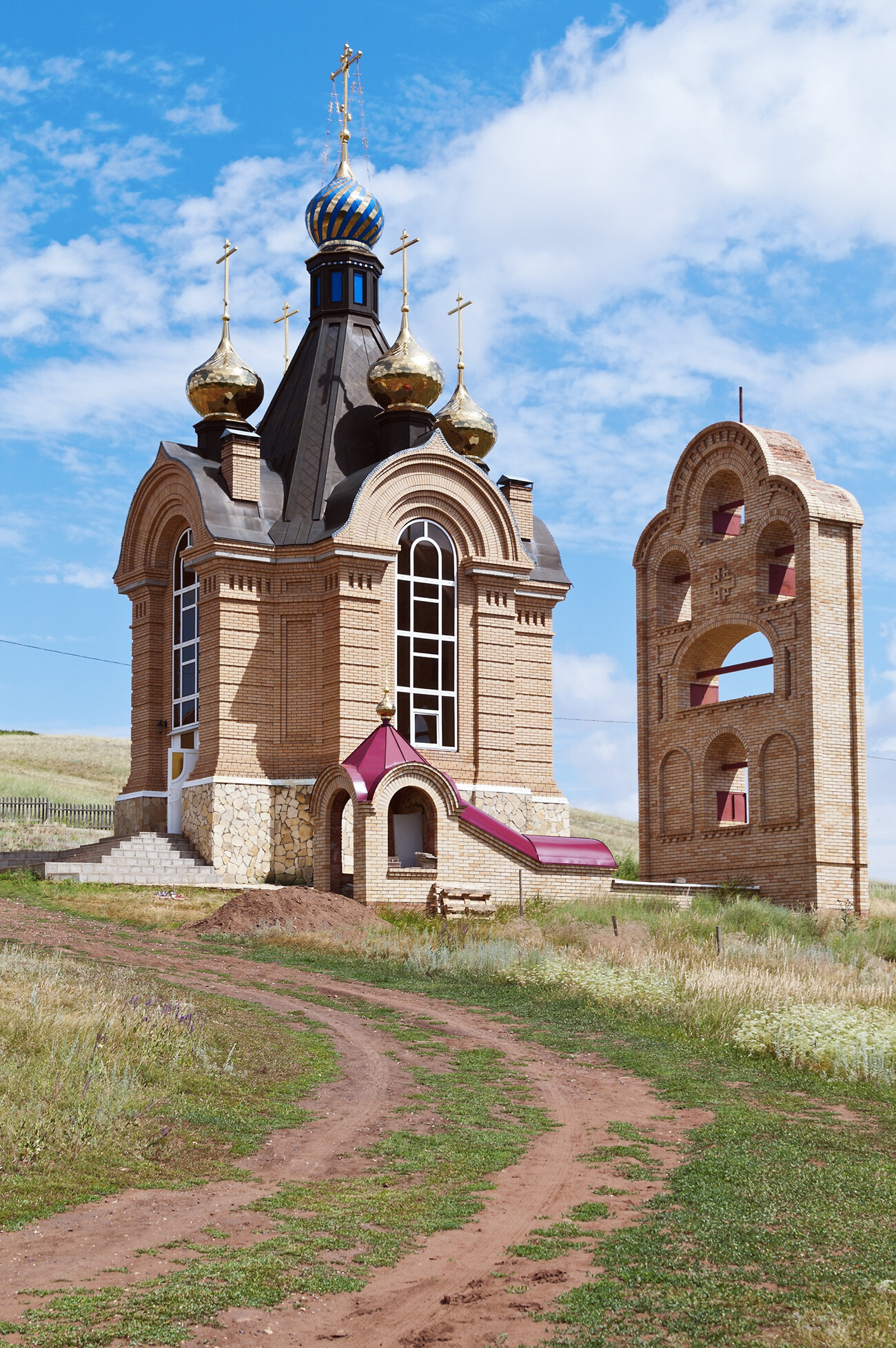7 cave monasteries in Russia (PHOTOS)

Dormition Divnogorsky Monastery

This area was named Divnogorye because ‘divas’ are located there - chalk pillars of different heights. The first cave monastery on the Don River is located in Malye Divy. Its history is lost in the centuries: According to one version, it was founded in the 12th century by Greek schema-monks, who fled from the persecution of Catholics in Sicily.

According to another, the monastery was founded in the 17th century. On the territory of the monastery there are six caves up to 284 meters long, carved into ‘divas’, where the chapels and churches are located. In Soviet times, it was closed, the priceless library was thrown into the river and a sanatorium and hospital were organized there.

Monastic life was revived only in 1997. Next door, in Bolshiye Divy, there is a church of the Sicilian Divnogorskaya icon of the Mother of God - it is considered miracle-working and, according to legend, it saved the locals from cholera in the 19th century.
Kostomarovsky Spassky Monastery

The monastery is located in Voronezh Region, a few kilometers from the Don River. The white chalk mountains subtly remind one of the cave temples of Cappadocia and the Sinai Desert. The monastery consists of eight caves up to 220 meters long. Perhaps, the very first ones appeared back in the 8th-10th centuries and, over time, they became more and more numerous, until a monastery arose in the middle of the 17th century.

One of the shrines of the monastery is the miracle-working Kostomarov icon of the Mother of God ’Blessed Heaven’ in human size. It was painted on a sheet of zinc in the middle of the 19th century by master Vasily Shokorev.

It still bears traces of bullet marks: a Red Army soldier aimed at the faces of the infant Christ and the Mother of God, but none of his six shots hit the target. On the territory of the monastery, there is the unique Cave of Repentance - a long corridor, on both sides of which are icons in niches. Those going for confession are left alone with their thoughts and are aware of the actions they have committed.
Assumption Pskov-Pechersk Monastery

It was said about these places that people used to hear beautiful voices and smelled incense. At the end of the 16th century, under the rubble of trees, a peasant named Ivan Dementiev discovered the entrance to a cave with the inscription "God-built caves".

Their first inhabitants were monks from the Kiev-Pechersk monastery, while, at the end of the 15th century, a local priest dug a new cave in the sandy hill near the Kamenets River, where they arranged the church of the Dormition of the Mother of God.

Today, it houses the miracle-working icon of the Dormition of the Mother of God, which protects the Pskov lands from enemy troops. Another revered image is located in St. Michael's Cathedral - the Pskov-Pechersk Icon of the Mother of God of Tenderness. There are six caves on the territory of the monastery: those created by God were used as a necropolis.
Kholkovsky Trinity Monastery

According to legend, this monastery was founded at the meeting place of princes Igor and Vsevolod Svyatoslavovich before the campaign against the Polovtsians.

Monks lived and prayed in caves. Under Catherine II, the monastery was closed and it gradually fell into disrepair.

Only in 1990 did the caves begin to be restored and cleared of debris.
Skanov Monastery of St. Anthony and Theodosius of Pechersk

Originally, the Cave Skete (a monastic community in Eastern Christianity) of the Trinity Skanov Monastery was located there. Since the 16th century, chapels were dug in Plodskaya Gora and a church was built. New corridors were broken through - their total length reached 670 meters, more than in the Kiev-Pechersk Lavra.

The temperature in them is the same throughout the year - from 6 to 12 degrees Celsius. During Soviet times, the Cave Skete was abandoned and was revived only in 2007 - as a male monastery of St. Anthony and Theodosius of Pechersk. Inside, a church was built in honor of the New Martyrs and Confessors of Russia.
St. Nicholas Monastery

This monastery is also called the ‘Holy Caves’. In 1896, Zachary Kartsev settled on the high bank of the Samara River: the Mother of God appeared to him in a dream and told him to go on a journey. The widowed Cossack spent two years in the cave he dug with his own hands: he dug underground passages and spent hours in prayer.

Gradually,like-minded people appeared and, in 1909, Kartsev became a monk. The corridors of the caves became deeper and deeper and, over the years, the followers of Father Zosima dug 256 meters of passages. Gradually, the skete grew into a monastery.

But, after 1917, the caves were filled up and the buildings of the monastery were destroyed. They were only restored in 2002 and, a few years later, they were equipped with the church of St. Anthony and Theodosius of Pechersk and the chapel of the Great Martyr Panteleimon.
Gethsemane Chernigov Skete

In 1844, a few monks settled down a short distance from the Trinity-St. Sergius Lavra to spend their days in prayer and solitude. A holy fool named Filippushka joined them and started digging caves - gradually, chapels and the underground church of Archangel Michael appeared one after another.

There was no heating in the underground corridors: the only source of heat were the burning lamps. In the late 1980s, after years of neglect, the skete began to be revived. Today, people come to see the restored caves and visit the majestic cathedral of the miracle-working Chernigov-Gethsemane Icon of the Mother of God.

